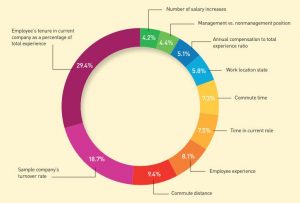Finance innovators – Watchlist for future
At a recent accounting conference in Malaysia, the chief executive of the Malaysian Institute of Accountants opened the first panel discussion by presenting statistics from a World Economic Forum report on the future of jobs. In the report, accountants and auditors are classified under “redundant roles” that will see steep decline in demand over the next few years due to automation. Minutes later, one of the most popular questions from the audience was “How accurate are those statistics?” It reflects a sense of incredulity amongst professionals in the accounting and finance industry. Change can’t be that soon, can it?
You may share the same sentiment. You may have heard buzzwords like automation and artificial intelligence generate chatter in the office or at networking events. They have become ubiquitous in our business vocabulary, yet they are minimally understood. Perhaps you can’t help wondering, “How many of these new technologies are truly ‘disruptive’ and not passing fads?” (History tells us: Whatever is practically useful and reaches a tipping point in adoption survives).
Experts are saying that these new tools are not an evolution of current technology. Rather, it’s a revolution. Klaus Schwab, executive chairman of the World Economic Forum, wrote that the scale, scope, and complexity of this revolution is “unlike anything humankind has experienced before”. And these changes are not limited to technology. Climate change is also affecting the availability of natural resources like water and arable land. It is forcing businesses to rethink the sustainability of their practices.
There’s a silver lining amidst these changes: We are only at the beginning, and there’s still some time to learn about them. Management accountants are needed now more than ever to help navigate this tumultuous time. We dug deeper into six must-know topics from a recently published watchlist by the Association of International Certified Professional Accountants and listed resources to help you learn more. Here’s to future-proofing your career.
1. BLOCKCHAIN
Invented as the technology behind bitcoin ten years ago, blockchain has garnered greater attention in recent years as a technology with the potential to transform financial transactions, supply chain management, and even large portions of the internet. A blockchain report by the American Institute of CPAs defines it as a distributed public ledger that makes a record of every transaction and adds it to a chain of all the transactions that have come before. In accounting and finance, blockchain may enable firms to create immutable and continually updated financial records that are difficult to tamper with. In other industries, companies such as Walmart and Pfizer have completed blockchain pilots to improve food safety and track medicine.
Large and consistent investments into blockchain startups are an indication of interest in the technology. In 2017, venture-capital funding for blockchain startups was up to $1 billion, according to a McKinsey report. In the same report, the consultancy identified some sectors that are inherently more suited for blockchain implementation; namely, financial services, government, and healthcare. In the short term, blockchain’s value lies in cost reduction, but meaningful scale is still three to five years away, according to the report. Some cite its instability, high cost, and complexity as causes for its stuttering path toward mainstream adoption.
Bottom line: Experiments with and implementation of blockchain will continue in 2019 as more applications are identified. But meaningful scale of blockchain implementation to realise its full value in reducing costs and generating revenue is still a few years away.
2. ARTIFICIAL INTELLIGENCE
Artificial intelligence (AI) refers to a branch of computer science that strives to create software that mimics human intelligence. AI-related applications already have been implemented in operations and finance to automate repetitive processes. In 2019, 20% of US organisations plan to implement AI enterprise-wide, according to a PwC survey.
Far from a single technology, AI is an umbrella term that covers a number of areas, among them machine learning, natural language processing, and deep learning. Banks are using AI surveillance tools to prevent financial crime, and insurers use automated underwriting tools in decision-making. In an FM magazine interview, UBS wealth managers spoke about building robo-advisers and using AI and natural language processing to conduct due diligence on the bank’s clients.
The software the bank built can conduct quicker and more convenient know your client (KYC) and anti-money laundering (AML) checks compared to a human worker. It parses hundreds of pages of search engine results for negative news and conducts checks on a potential client’s criminal history — a task that would have demanded a significant amount of a human employee’s time.
Technology expert Amy Vetter, CPA/CITP, CGMA, CEO of The B3 Method Institute, said in a series of video interviews with the Journal of Accountancy that “there are many who look at the technology that’s coming … that we’re going to be disrupted and accountants will go away. And I do not believe that is the case at all.” Instead, new technologies will free up time for finance professionals to provide analysis of financial data, she said. For that to happen, finance professionals will have to train on new technologies, whether through courses or hands-on experience. Communications skills will also be pivotal to help accounting and finance professionals explain their analyses effectively.
Bottom line: AI technology is already implemented in various finance functions and industries. The first step is to learn more about AI — its opportunities and limitations. Its potential is in freeing up human workers to provide more value-added services. Great opportunities await the eager student.
3. ROBOTICS
The inconsistent use of vocabulary to describe robotics, sometimes called automation, has created much confusion. Some may even imagine a physical robot sitting in an office. Robotics here refers to robotic process automation (RPA), and quite simply it’s a class of software used to process transactions, manipulate data, trigger responses, and communicate with other digital systems.
Although not an entirely new phenomenon, RPA’s capabilities have improved remarkably over time. Rob King, author of Digital Workforce and vice-president of education at RPA Academy, said in an Association podcast that “RPA has definitely arrived”.
Last year, FM magazine got an inside look at how a Koch Industries subsidiary successfully implemented RPA, freeing up almost 50,000 employee-hours after less than two years of implementation. At the company, RPA was used to automate invoice transactions and track third-party labour.
In 2019, companies will continue to explore RPA implementation and reskill employees to adopt the technology. Research firm Gartner estimates that global spending on RPA will reach $2.4 billion in 2022, compared to $680 million in 2018.
Bottom line: Robotics’ capabilities have matured over time. More companies will want to use RPA to automate repetitive tasks, increase efficiency, and reduce costs. Most large enterprises will embrace RPA in the next few years. For smaller firms, the cost barrier to implement RPA will gradually diminish.
4. NATURAL CAPITAL CONCERNS
The only nontechnology trend on this list, but no less significant, is natural capital concerns or environmental risks, which have been brewing in the background for years. We would need 1.7 planets to sustain our current global levels of consumption, according to the World Wildlife Fund (WWF) Living Planet Report 2018. The study estimated that at our current rate, we are using up natural resources faster than they are replenishing themselves. In relation to the Financial Times WWF Water Summit last year, Margaret Kuhlow, WWF’s finance practice leader, wrote that businesses need to get serious about water risks and disclose greater asset-specific location data to identify water investment opportunities.
Former New York City mayor Michael Bloomberg has led the establishment of the Task Force on Climate-related Financial Disclosures (TCFD), encouraging organisations to provide voluntary financial disclosures related to climate that can paint a fuller picture of their businesses. Momentum has also been gathering on nonfinancial reporting. FM magazine reported on a recent debate organised by Oxford Saïd Business School where speakers posed arguments on whether standardised nonfinancial reporting should be mandated for it to be useful to investors. “We need to make sure that climate change, biodiversity, and inequality are dealt with in the future. … There is an urgency,” said Paul Druckman, former CEO of the International Integrated Reporting Council, an organisation that advocates for natural capital and other nonfinancial information to be included in corporate reporting.
Bottom line: Businesses are realising that environmental sustainability must be given greater consideration in business decisions. In 2019, there may be greater support and practice of disclosing climate-related information in corporate reporting.
5. BANKING EVOLUTION
Last year in an issue of the IMF magazine Finance and Development, Stefan Ingves, the governor of the world’s oldest central bank, Sweden’s Riksbank, pondered the question, “In a cashless society, what would legal tender mean?” The question is not far-fetched because Swedish society has almost stopped using paper money, preferring transactions through cards and digital platforms.
Other than changing consumer preferences, banking is also evolving because of the rise of bitcoin and other cryptocurrencies. Although many do not consider cryptocurrency a reliable substitute for cash due to its price volatility, consumers and businesses are already performing transactions using these virtual currencies. Among many are Microsoft, Subway sandwich shops, and e-commerce site Shopify.
In 2019, Sweden’s central bank is expected to issue its first cryptocurrency, e-krona. In the UK, the Bank of England published a working paper last year to understand the implications of a central bank-issued digital currency. In this banking evolution, traditional functions of banks as clearing houses will also change, causing banks to rethink their business models. According to Deloitte, 2019 will see retail banks race to be digital leaders in embracing a mobile-centric customer experience, while fintechs attempt to devour a larger piece of the market share by providing faster payments that work seamlessly across borders.
Bottom line: Debates on whether cryptocurrency can be money will continue in 2019. But consumer preference for hassle-free banking introduced by fintechs is already the standard baseline. What happens in fintech doesn’t stay in fintech — “Why can’t I pay with my e-wallet?”
6. QUANTUM COMPUTING
IBM kicked off 2019 by launching the world’s first stand-alone quantum computer, the Q System One, for commercial applications. Quantum computers are radically different from today’s computers. Instead of running on bits, they run on quantum bits or qubits, and promise to surpass even the fastest supercomputers of today. But don’t run off to get a quantum computer just yet. IBM is not producing quantum computers for sale, and the quantum computer’s processing powers are only accessible through IBM’s computing cloud, similar to what the US’s Rigetti Computing and Canada’s D-Wave are offering. More importantly, the Q System One is still an experimental device used to figure out how quantum computers might work.
Winfried Hensinger, professor of quantum technologies at the University of Sussex, told The Verge that “it’s more like a stepping stone than a practical quantum computer. … Think of it as a prototype machine that allows you to test and further develop some of the programming that might be useful in the future.”
That said, banks like Barclays and JP Morgan Chase are already experimenting with quantum computing. IBM, as quoted in the American Banker, said that organisations are interested in using quantum computing to develop a competitive advantage. Financial institutions are testing it to help minimise risk and maximise gains from their portfolios.
In the US, a law was signed in December to provide $1.2 billion over five years to boost US quantum technology. In China, quantum technology was deployed in the Micius satellite to develop new forms of secure communications.
Bottom line: Albeit in its infancy, quantum computing will have huge political and economic implications once the technology matures. It will be enterprise-ready when it can deliver reliable performance. IBM expects revenue from its quantum computers in two years.
Source : GCFM








